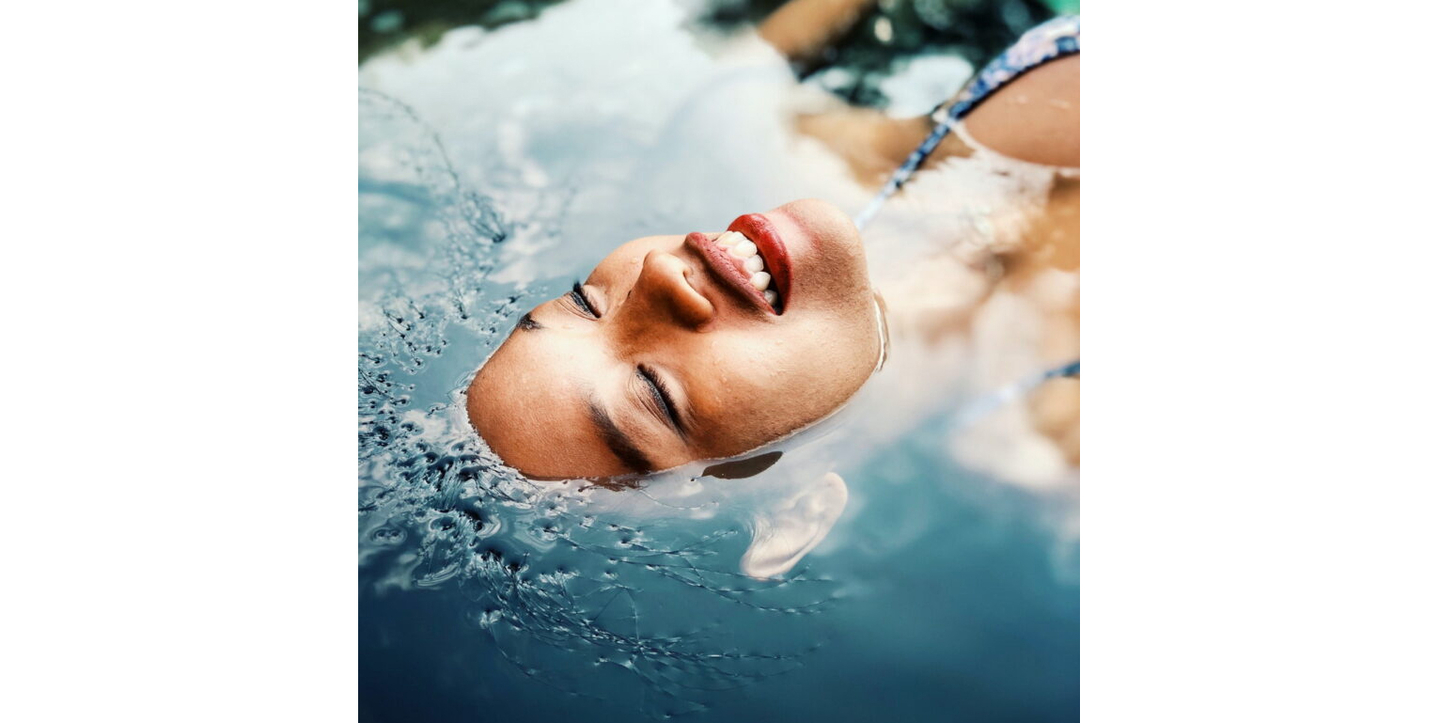Is My Hair Healthy or Damaged?


Great hair days are usually defined by a bouncy blow dry, the ideal undulating waves, or the perfectly done, undone look. But aside from your finished look, there’s a lot that goes on behind the scenes to ensure a perfect style. The number one determining factor of a great style? It’s all about how healthy your hair is. So, if you’re still wondering, “Is my hair healthy or damaged?” — it’s time to discuss.
Signs That You Have Damaged Hair
Obvious signs like frizz, breakage and split ends are well-known markers of damaged hair. But when you look deeper, there are signs like the elasticity of your hair, porosity and texture that also factor in when determining if your hair is damaged or healthy. Typically, your hair is considered damaged if you experience:
- Split ends
- Frizz
- Breakage
- Brittle hair
- Lack of elasticity
- A change in natural texture that feels more coarse
- Easily tangles and knots
- Hair loss
- Colour fade
- Lack of manageability
- Dryness
- Dullness
Signs That You Have Healthy Hair
Healthy hair can be attributed to a mix of lifestyle choices and hair care routines that focus on internal and external wellness. While the lack of any of the above signs are tell-tale signs that your hair is healthy, you can tell your hair is healthy by the look and feel of your strands. If your hair is healthy, you’ll notice these signs:
- Smooth feel that is free of frizz
- Hair is shiny
- Lack of breakage or split ends
- Well balanced scalp function
- Easy to manage when brushing and styling
How To Test Whether You Have Healthy or Damaged Hair
If you’re unsure about the state of your hair, there are a few tests you can perform to check if it is healthy or damaged. For best results, attempt these tests just after you shower on damp hair and before applying products.
Test #1: Checking The Elasticity of Your Hair
Elasticity is one of the most important factors of determining how healthy your hair is. To check your hair’s elasticity, take a strand of hair between your fingers and gently pull it until it reaches its full-length potential.
- Your hair is healthy if that strand feels springy, stretches and returns to its normal length, this means your keratin level is in good condition.
- Your hair may be damaged if when stretching your hair doesn’t go back to its original state after a couple of minutes, or it snaps during stretching. This can be a sign of a lack of protein.
Test #2: Checking How Smooth Your Hair Is
While smooth often refers to a finished hairstyle, in this instance, we’re focusing on the individual strands and how smooth or rough they are. When performing this test, take a couple of strands, run them between your fingers and check if there are any uneven spots or bumps on the hair surface.
- Healthy hair will still have a slight roughness to it, but overall your fingers should easily slide down your strand and have a smooth, almost squeaky sensation to it. Healthy hair that feels smooth doesn’t need as many treatments but can still benefit from the addition of protein and moisturising treatments, leave-ins and heat protection on a normal basis for upkeep.
- Hair that is damaged will feel very rough all over or in certain areas and can sometimes break near the end when doing this test. If your hair breaks often and feels very rough adding protein, moisturising and bond building treatments to your routine is key. This will help rebuild the structure of your hair from the inside out to decrease damage.
Test #3: Checking Your Hair’s Porosity
The porosity of hair is defined by how open or closed the cuticle layer of your hair is and how well it holds on to moisture. Hair porosity can either be low, medium, or high. While some of this will come down to genetics, the porosity of your hair can determine how healthy or damaged your hair is. To test, take a clean piece of hair and float it in a glass of room temperature water.
- Hair that is healthy often has a low to medium level of porosity. If your strand of hair floats on the surface of the water, this signifies a low level porosity, meaning your hair is healthy. Hair with low to medium porosity has a normal function and will generally absorb water and hair products. Low to medium porosity hair will usually look shinier, experience colour longevity and less frizz.
- Hair that is damaged has a high porosity. If your strand of hair is submerged or floats in the middle, this usually means your hair has high porosity and is damaged. If your hair is overly porous, the cuticle layer is in a more open position, so hair will often lose moisture easily and will not hold on to products. While high porosity hair dries quicker, it can tend to be less manageable, experience colour fade quickly and appear frizzy.
Test #4: The Gloss Test
One of the simpler ways to check the health or damage of your hair is to simply look at how glossy (read: shiny) your hair is. For best results, look at your hair in natural light, running your fingers through it to feel the strands and check your entire head.
- Healthy hair will easily appear shiny naturally. You’ll notice your colour looks bright and vibrant, natural texture is more easily defined and your hands run through it easily.
- Damaged hair will appear dull with an almost matte effect. This usually signals that your hair is overly dry and can benefit from hydrating and rejuvenating products. Note: This test may not work on rebonded or chemically treated hair.
Common Causes of Hair Damage & How To Reverse It
Hair damage is completely unique to each person. It comes down to a variety of factors that can include everything from genetics to hair type, porosity, texture, colour preference and styling habits. The most common causes of hair damage are things like heat damage or mechanical damage, UV exposure, over-processing and product or mineral buildup from hard water. With a combination of lifestyle changes, good hair habits and the right products, you can improve the hair damage already done and safeguard your strands against future damage for healthier hair.
Cause #1: Heat Damage
- Heat damage is caused by the impact that blow dryers, curling tongs and flat irons have on your hair. With constant exposure to heat damage, you can expect symptoms like dryness, brittleness and split ends to show up. And it doesn’t matter what hair type or texture you have, everyone’s hair is susceptible to heat damage. While some head damage can happen with immediate effect, some heat damage to your hair happens over time.
The Solution:
The most promising way to cut down on heat damage is by avoiding it all together by air-drying instead. On the occasions when you still want to use heat to style your hair, you should always use heat-protectant products designed to guard your hair against damage.
Cause #2: Harmful Ingredients in Hair Products
Some shampoos contain ingredients that may be irritating to your scalp and hair follicles, so it’s crucial to read the labels to know what to look out for.
The Solution:
When considering a product for your hair care regimen, check the ingredients! Always opt for sulphate-free, paraben-free, and cruelty-free products, and, where possible, those which are also environmentally friendly.
Cause #3: Chemical Treatments
You might know it as highlights or a root touch up, but these common services alongside perms and rebonding treatments all fall under the umbrella of ‘chemical treatments.’ In addition to potentially causing harm to the health of your hair, these can also be damaging to your scalp.
The Solution:
Always leave chemical treatments to the professional — this means skipping the DIY hair dye. When done properly in the salon you greatly minimise and damage done to the hair and scalp. In addition to this, your stylist can offer you advice on which conditioning or bond-building treatments you should pair with your service and the best at-home products for upkeep.
Cause #4: Environmental Factors
While spending time in the sun can be great for our mood and our Vitamin D levels, but when it comes to UV exposure too much is not a good thing. When your hair is exposed to the sun, harmful UVB and UVA rays impact the cuticle, which lead to dryness, brittleness, split ends, thinning, and discolouration. Apart from UV exposure, if you live in a high-polluted environment, excess dirt and debris can accumulate on your scalp and strands the same way it would impact your skin. This can cause damage or scalp issues like sensitive scalp syndrome.
The Solution:
Instead of cutting out the sun completely, focus on ways to cut down on its impact. Just like you would put sunscreen on to protect your skin, opt for hats or scarves to physically protect your hair from the sun when outdoors. At home, ramp up moisturising and bond-building treatments to ensure your hair is healthy and strengthened from the inside out. If you’re dealing with exposure to pollution, add a hair detox product to your routine to wash away all the impurities.
Cause #5: Stress & Bad Habits
Big or small, life’s stressors can have a negative impact on our mental and physical health. Every day, we are facing stress from different factors, which, if not addressed on time, leave a massive impact on our well-being, hair included. Symptoms of stress usually manifest as hair loss, lack of hair growth, scalp discomfort, and other signs of damaged hair. Scientific research shows that the same issues can appear if our lifestyle includes poor diet and unhealthy habits.
The Solution:
To reduce stress, your wellness, lifestyle, and daily habits need to be addressed. Unlike mechanical hair damage that leads to split ends and breakage, stress is usually chronic and needs to be addressed with both mental and physical changes. Focusing on self-care can be a great way to practise mindfulness while also improving the health of your hair. This can be everything from setting time aside for masque treatments to adding an exfoliating scalp treatment or scalp massage to your daily rituals.
Cause #6: Tight Hairstyles
We love the look of a snatched ponytail as much as the next person, but sometimes wearing excessively tight hairstyles repeatedly can lead to sensitive scalps, hair loss and breakage. This is because when hair (especially thick or heavy hair types) is held tight in a position that goes against the normal fall of the hair follicle, it can cause tenderness or pain.
The Solution:
You don’t have to completely sacrifice your style, simply think about cycling in and out hairstyles to avoid discomfort. Add hairstyles with less tension like loose braids and wearing your hair down to the mix. Additionally, swap out rubber hair bands for silk or cloth alternatives that hold the hair gently without leading to excess breakage.
FAQ
Besides the obvious signs like frizz, breakage, and split ends, subtle signs of hair damage include lack of elasticity, change in natural texture, easily tangled and knotted hair, color fade, and dullness.
There are several tests you can perform, such as the elasticity test (checking if a hair strand stretches and returns to its original state), the smoothness test (feeling for rough spots on individual strands), the porosity test (floating a hair strand in water), and the gloss test (checking for natural shine in natural light).
Common causes of hair damage include heat damage, harmful ingredients in hair products, chemical treatments, environmental factors, stress and bad habits, and tight hairstyles. Mitigate them by using heat protectants, choosing sulfate-free and paraben-free products, leaving chemical treatments to professionals, protecting hair from the sun, managing stress, and alternating tight hairstyles with looser ones.


